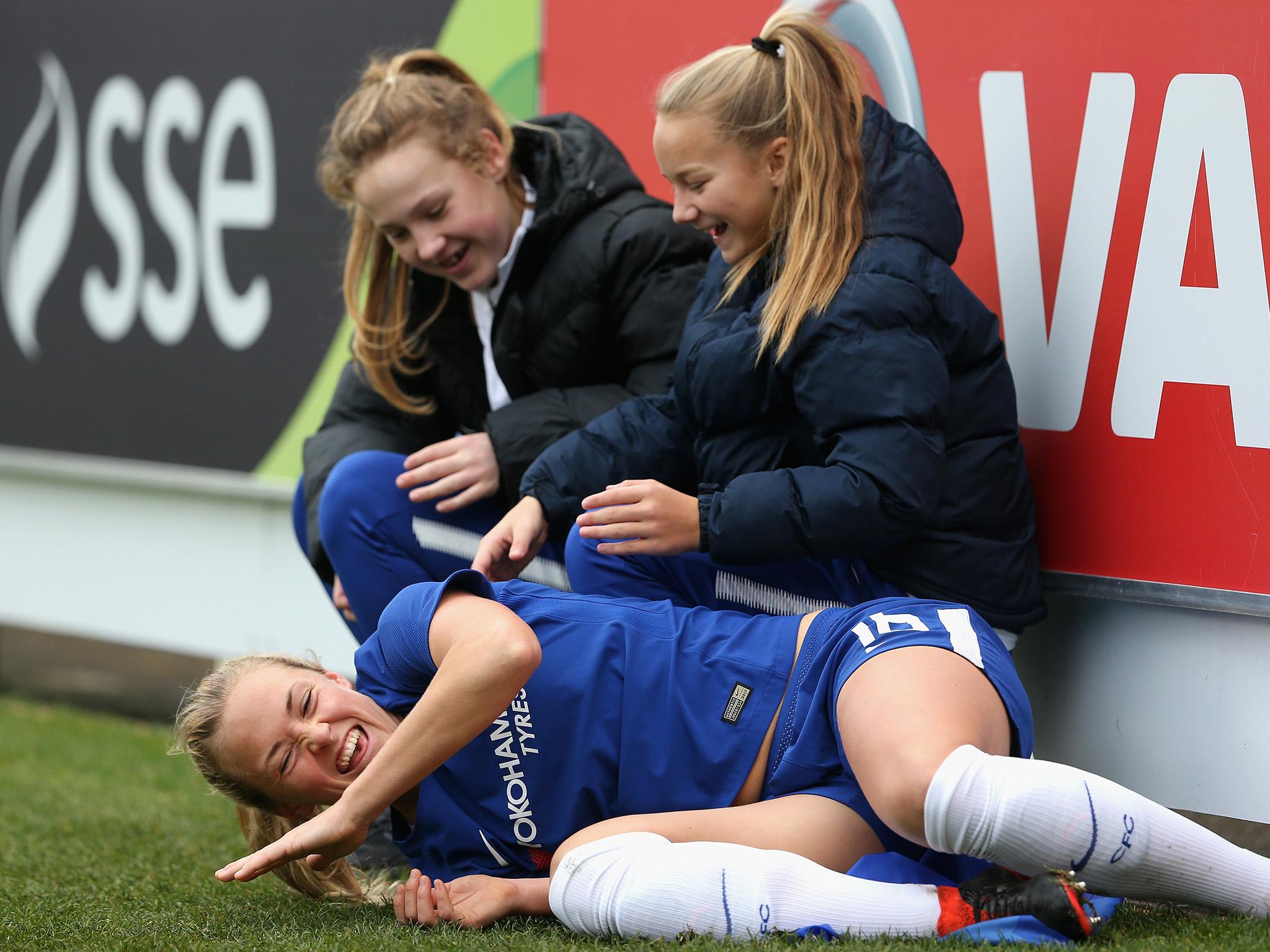Lack of physical activity among girls leading to poor mental health and low aspirations, warn experts
New figures show boys aged between eight and 15 spend almost twice as much time doing sport activities as girls of same age

Your support helps us to tell the story
From reproductive rights to climate change to Big Tech, The Independent is on the ground when the story is developing. Whether it's investigating the financials of Elon Musk's pro-Trump PAC or producing our latest documentary, 'The A Word', which shines a light on the American women fighting for reproductive rights, we know how important it is to parse out the facts from the messaging.
At such a critical moment in US history, we need reporters on the ground. Your donation allows us to keep sending journalists to speak to both sides of the story.
The Independent is trusted by Americans across the entire political spectrum. And unlike many other quality news outlets, we choose not to lock Americans out of our reporting and analysis with paywalls. We believe quality journalism should be available to everyone, paid for by those who can afford it.
Your support makes all the difference.There is a "direct correlation" between a lack of physical activity by young British girls and them having poorer mental health and lower aspirations than their male counterparts, experts have warned.
Boys aged between eight and 15 spend almost twice as much time doing sport activities as girls of the same age, according to new figures from the Office for National Statistics (ONS).
They also revealed that girls spend an average of 25 minutes a day on sports activities, compared with 40 minutes for boys.
Girls were also less likely to participate in sports activities than boys, with a daily participation rate of 26 per cent, compared with 39 per cent for eight-15-year-old males. This was despite the fact that girls who participated in sports got the same level of enjoyment from it as boys.
The Youth Sport Trust (YST), a charitable trust that aims to support the development of young people through physical education, has warned that the discrepancy is detrimental to girls’ development.
“There is a direct correlation between girls’ future life chances and the amount of physical activity they do in their younger years," Chris Wright, its head of wellbeing told The Independent.
“Quite often high-flying businesswomen talk about being very involved in sport when they were younger. Doing sport as children appears to help girls feel empowered and able to achieve things.”
He added: “Lack of activity correlates to a greater decline in wellbeing among children and teenagers. All the evidence suggests that if you’re inactive you’re likely to be less happy.”
Research last year showed women held just 12 per cent of full-time jobs paying £150,000 or more.
A separate study revealed that almost one in four teenage girls suffer from depression, compared with just 9 per cent of boys the same age.
The ONS figures also showed that the average amount of leisure time children spent in parks, countryside, seaside, beach or coastal locations was 16 minutes per day. Children also reported greater enjoyment ratings when taking part in entertainment and culture activities and sports and exercise activities than for other outdoor activities.
Recent research by the YST meanwhile shows that by the age of seven girls are already less active than boys, with this disparity widening as they move from childhood into adolescence.
It also shows that biggest drop-off in girls participating in sports activities occurs during the transition from primary to secondary school, with disruption to friendship groups and declining body confidence affecting girls’ participation in PE and sport.
Dawn Snape, assistant director of the ONS’s Well-being, Inequalities, Sustainability and Environment (WISE) Division, said: “This is the first time we have looked at how children are spending their leisure time on sports and outdoor activities.
“Of their outdoor leisure activities, taking part in sport is by far the most popular among eight to 15-year-olds. Boys spend significantly longer than girls on sport but interestingly, boys and girls who do participate in sport, enjoy it equally.”
A Department for Education Spokesperson said: “We want to encourage all young people to get into the healthy habit of playing and enjoying sport – both inside and outside school.
“We know that many schools are using their primary PE and School Sport Premium funding to focus on girls P.E and target groups who may traditionally be less active, with 31 per cent of schools reporting that they used their funding to target girls.
“Across government we continue to work to promote women’s sport. Sport England funds a number of programmes to encourage girls and women to get physically active, including ‘This Girl Can’ and ‘Girls Active’.”
Join our commenting forum
Join thought-provoking conversations, follow other Independent readers and see their replies
Comments